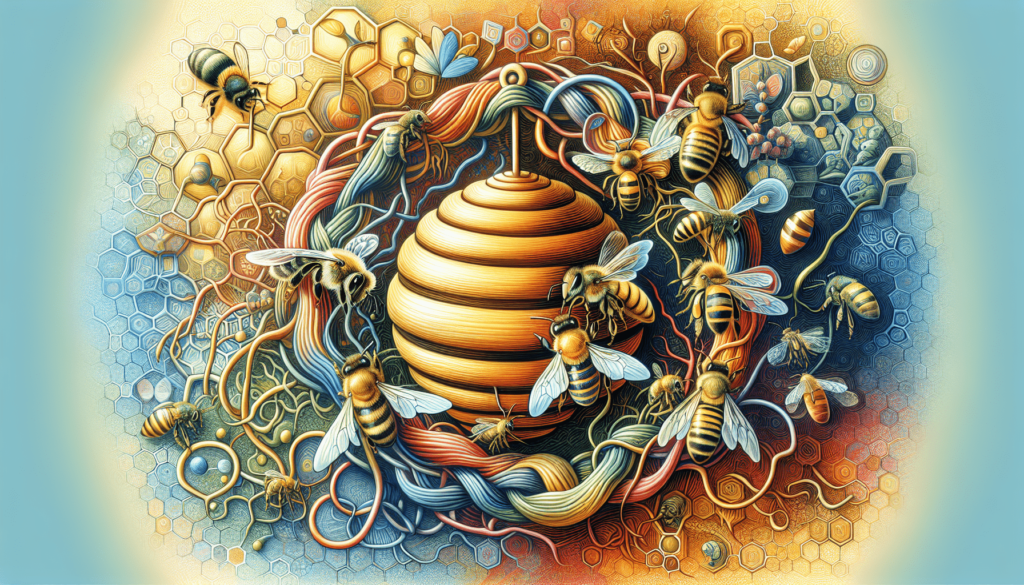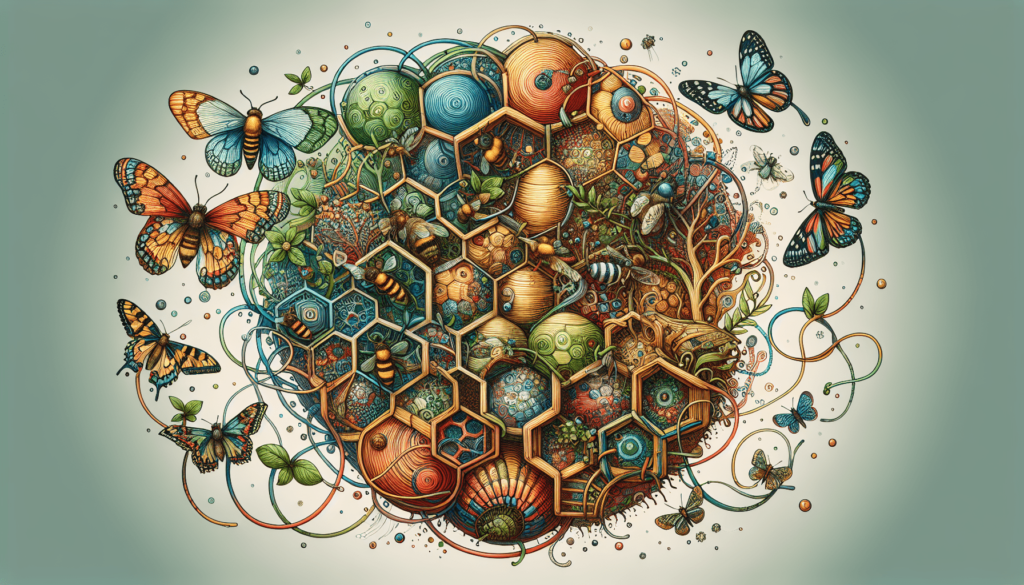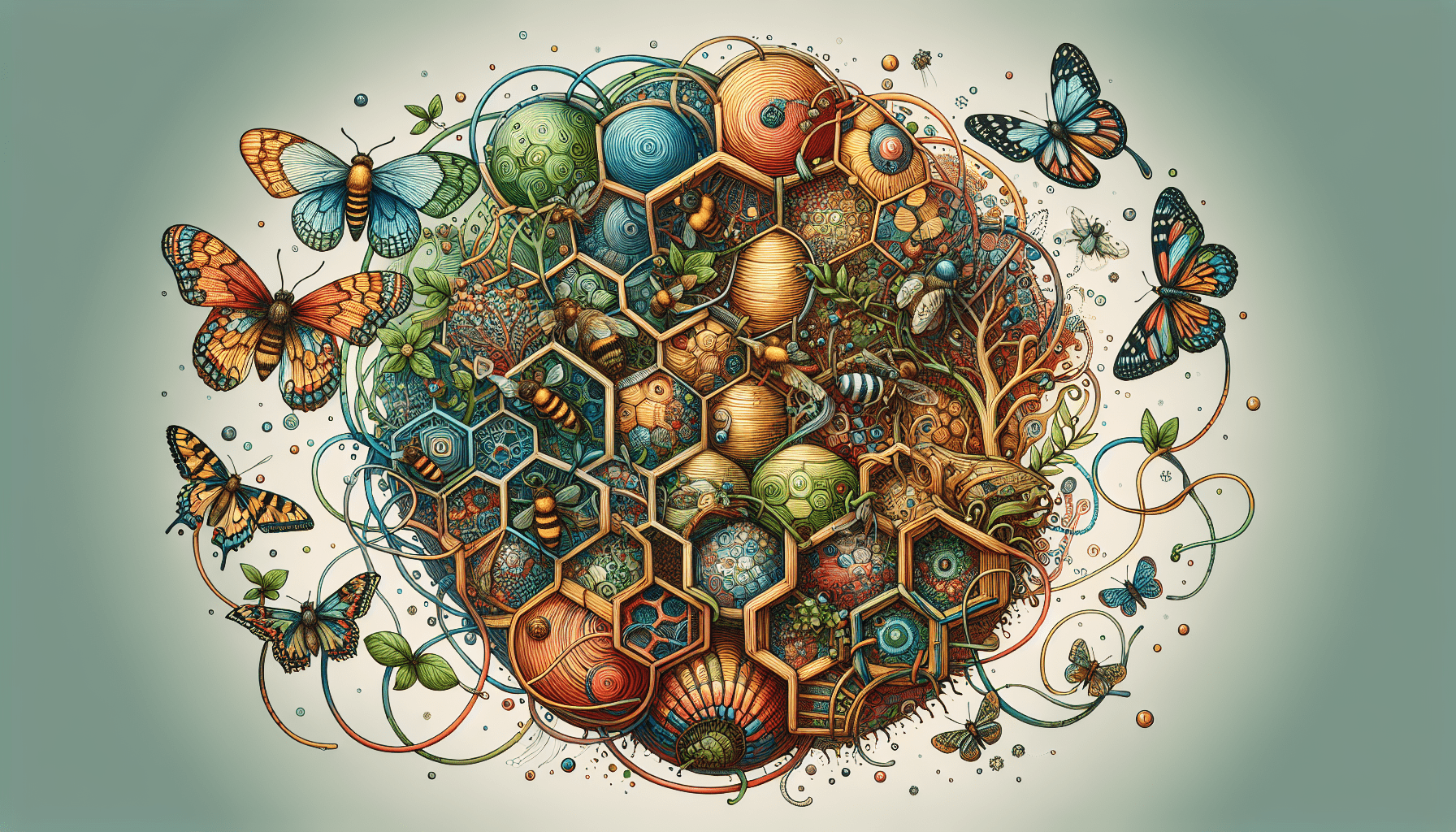Biodiversity and sustainability are two interconnected concepts that play a vital role in the delicate balance of our planet’s ecosystems. Biodiversity, the variety of life forms found on Earth, encompasses not only the vast array of species but also the genetic diversity within each species and the diverse ecosystems they inhabit. Sustainability, on the other hand, refers to the long-term ability of an ecosystem to maintain its environmental, social, and economic balance. In this article, we will explore the intricate relationship between biodiversity and sustainability, highlighting how the preservation and enhancement of biodiversity are essential for achieving sustainable development and securing a flourishing future for all life on Earth.

Definition of Biodiversity
Richness of life on Earth
Biodiversity refers to the variety and abundance of living organisms on Earth, including plants, animals, microorganisms, and ecosystems. It encompasses the richness of life in all its forms, from the smallest microbe to the largest mammal. Biodiversity is a measure of the diversity of species, as well as the genetic variation within each species.
Genetic variation
Genetic variation is an essential component of biodiversity. It refers to the differences in genetic material within a species, which leads to variations in traits such as size, color, and behavior. Genetic variation is crucial for the survival and adaptation of species to changing environments. It allows populations to evolve and develop resilience to threats such as diseases, climate change, and habitat loss.
Ecosystem variety
Ecosystem variety refers to the diversity of habitats and ecological communities present on Earth. Ecosystems can range from rainforests and coral reefs to deserts and tundra. Each ecosystem has its own unique set of species adapted to specific environmental conditions. The variety of ecosystems contributes to the overall biodiversity of the planet and provides a wide range of services and resources that support life.
Importance of Biodiversity
Ecological stability
Biodiversity is essential for maintaining ecological stability. A greater variety of species within an ecosystem provides a higher level of resilience and stability against disturbances. In diverse ecosystems, species can fulfill different ecological roles, such as pollination, nutrient cycling, and pest control. If one species declines or disappears, other species can often compensate for the loss, maintaining the overall functioning of the ecosystem.
Economic value
Biodiversity provides numerous economic benefits. Many industries depend on natural resources extracted from biodiverse ecosystems, such as food, timber, medicine, and fuel. Biodiversity also supports ecotourism, attracting visitors to areas rich in wildlife and natural beauty. Moreover, diverse ecosystems are more resistant to diseases and pests, reducing the need for costly interventions and ensuring the continuity of agricultural production.
Human health
Biodiversity plays a vital role in supporting human health. Many medicines and treatments are derived from natural compounds found in plants, animals, and microorganisms. Biodiversity also provides ecosystem services that are essential for human well-being, such as the regulation of air and water quality, climate regulation, and the pollination of crops. Moreover, spending time in natural environments has been linked to reduced stress and improved mental and physical health.
Principles of Sustainability
Interdependence and interconnectedness
Sustainability focuses on maintaining the balance and interdependence of ecological systems. It recognizes that all aspects of the natural world are interconnected and that the well-being of humans is intimately linked to the health of the environment. Therefore, sustainable practices strive to minimize negative impacts on ecosystems and rely on the understanding that the actions we take today affect the future well-being of both humans and the planet.
Long-term perspective
Sustainability requires a long-term perspective that takes into account future generations and the finite nature of natural resources. It acknowledges that our current consumption patterns and resource exploitation can deplete vital resources and harm ecosystems if not managed responsibly. Sustainable practices prioritize the wise use of resources, ensuring their availability not only in the present but also for future generations.
Conservation and wise use
Conservation and wise use of natural resources are fundamental principles of sustainability. Conservation aims to protect and restore ecosystems, species, and genetic diversity. It involves the establishment of protected areas, the implementation of sustainable land and resource management practices, and the promotion of environmental education and awareness. Wise use, on the other hand, emphasizes the responsible use of natural resources to meet human needs while minimizing negative impacts on the environment.

Effects of Biodiversity Loss on Sustainability
Disruption of ecosystems
The loss of biodiversity can have profound consequences on the functioning of ecosystems. When species decline or disappear, the intricate balance and interactions within the ecosystem are disrupted. For example, the loss of pollinators can lead to reduced crop yields, while the disappearance of top predators can result in an increase in herbivore populations and damage to vegetation. These disruptions can have cascading effects throughout the ecosystem and ultimately impact its stability and resilience.
Decline in ecosystem services
Biodiverse ecosystems provide a wide range of essential services called ecosystem services. These services include regulating climate, purifying air and water, pollinating crops, controlling pests and diseases, and supplying food, fuel, and building materials. However, as biodiversity declines, the capacity of ecosystems to provide these services diminishes. This can have detrimental effects on human well-being, including reduced agricultural productivity, increased vulnerability to natural disasters, and compromised access to clean water and air.
Negative impact on human well-being
The loss of biodiversity can directly impact human well-being. It can lead to the extinction of species that are culturally or spiritually significant to communities, causing the loss of traditional knowledge and practices. Additionally, the degradation of natural habitats can result in the displacement of indigenous communities and disrupt their livelihoods. Moreover, the decline in biodiversity can contribute to the emergence and spread of infectious diseases, posing risks to human health.
Enhancing Sustainability through Biodiversity Conservation
Preservation of ecosystem functions
Conserving biodiversity is crucial for preserving the functions and services provided by ecosystems. This includes protecting key habitats, restoring degraded ecosystems, and promoting sustainable land and resource management practices. By safeguarding intact ecosystems, we ensure the continued provision of essential ecosystem services, such as carbon sequestration, water purification, and soil fertility. Biodiversity conservation also involves the protection of keystone species, which play a vital role in maintaining ecosystem structure and function.
Promotion of sustainable practices
Promoting sustainable practices across sectors is essential for enhancing sustainability and preserving biodiversity. This includes adopting sustainable agriculture techniques that minimize the use of pesticides and fertilizers, reducing waste and promoting recycling and renewable energy sources. Sustainable practices can also involve the implementation of sustainable fisheries and the promotion of responsible tourism that respects natural habitats and wildlife. By adopting sustainable practices, we reduce our ecological footprint and contribute to the conservation of biodiversity.
Integration of biodiversity into policies and decision-making
Integrating biodiversity considerations into policies and decision-making processes is crucial for enhancing sustainability. This involves recognizing the value of biodiversity in socio-economic development and incorporating it into strategies and plans at local, national, and international levels. Biodiversity considerations should be integrated into land use planning, infrastructure development, and resource management policies. By mainstreaming biodiversity, we can ensure its protection and sustainable use in the long term.
Biodiversity and Sustainable Development Goals
Goal 14: Life below Water
Goal 14 of the United Nations Sustainable Development Goals (UN SDGs) aims to conserve and sustainably use the oceans, seas, and marine resources. Biodiversity conservation plays a crucial role in achieving this goal by protecting marine ecosystems, preventing overfishing, reducing pollution, and preserving coastal habitats. Sustaining marine biodiversity is essential for the health of the oceans and the livelihoods of millions of people who depend on marine resources.
Goal 15: Life on Land
Goal 15 of the UN SDGs focuses on protecting, restoring, and promoting sustainable use of terrestrial ecosystems. Biodiversity conservation is central to achieving this goal by preserving natural habitats, halting deforestation, combating desertification, and preventing species extinction. Protecting terrestrial biodiversity is vital for maintaining ecosystem services, ensuring food security, and mitigating climate change.
Goal 13: Climate Action
Goal 13 of the UN SDGs emphasizes the urgent need to take action to combat climate change and its impacts. Biodiversity conservation is intrinsically linked to climate action as intact ecosystems act as carbon sinks, storing vast amounts of carbon dioxide and regulating the global climate. Additionally, resilient ecosystems are better able to adapt to climate change impacts, such as extreme weather events, rising temperatures, and changing precipitation patterns.
Examples of Biodiversity Conservation for Sustainability
Protected areas and nature reserves
Protected areas and nature reserves are crucial for conserving biodiversity. They provide safe havens for endangered species, protect critical habitats, and enable the restoration of degraded ecosystems. By establishing and effectively managing protected areas, we can safeguard biodiversity hotspots, preserve natural heritage, and provide opportunities for scientific research, education, and ecotourism.
Agroecology and sustainable agriculture
Agroecology and sustainable agriculture practices promote biodiversity conservation while ensuring food security and sustainable livelihoods. These practices involve the use of natural pest control, crop rotation, organic fertilizers, and agroforestry to enhance soil fertility and biodiversity. By promoting a diverse range of crops and agricultural practices, we support the health of pollinators, enhance ecosystem functions, and reduce the reliance on chemical inputs.
Forest management and restoration
Sustainable forest management and forest restoration are essential for biodiversity conservation and climate change mitigation. By implementing responsible logging practices, protecting old-growth forests, and replanting degraded areas, we can help maintain forest biodiversity and provide habitat for numerous species. Forest restoration efforts also contribute to carbon sequestration, water regulation, and the provision of timber and non-timber forest products.
Challenges to Achieving Biodiversity and Sustainability
Lack of awareness and understanding
A significant challenge to achieving biodiversity and sustainability goals is the lack of awareness and understanding among the general public and policymakers. Many people are unaware of the value and importance of biodiversity and the potential consequences of its loss. Enhancing education and awareness about biodiversity and sustainability is crucial for fostering a sense of responsibility and encouraging informed decision-making at all levels.
Political and economic barriers
Political and economic barriers often hinder efforts to prioritize biodiversity and sustainability. Short-term economic interests may conflict with the long-term benefits associated with biodiversity conservation. Lack of political will and inadequate funding can undermine conservation efforts and sustainable practices. Addressing these barriers requires the integration of biodiversity considerations into political agendas, the development of economic instruments that value ecosystem services, and the promotion of sustainable business practices.
Climate change and habitat loss
Climate change and habitat loss pose significant challenges to biodiversity conservation and sustainability. Rising temperatures, changing precipitation patterns, and extreme weather events can cause the displacement and extinction of species, disrupt ecosystems, and reduce the availability of resources. Habitat loss due to deforestation, urbanization, and land degradation further exacerbates these impacts. Addressing these challenges requires the implementation of climate change mitigation and adaptation strategies, alongside efforts to protect and restore habitats.
International Efforts for Biodiversity and Sustainability
Convention on Biological Diversity
The Convention on Biological Diversity (CBD) is an international treaty that aims to conserve biodiversity, ensure its sustainable use, and promote the fair and equitable sharing of benefits derived from genetic resources. The CBD provides a global framework for biodiversity conservation and sustainable development, guiding countries in the implementation of strategies, policies, and plans to safeguard biodiversity.
United Nations Sustainable Development Goals
The United Nations Sustainable Development Goals (SDGs) provide a comprehensive and integrated framework for sustainable development. Biodiversity conservation is explicitly addressed in SDG 14 (Life below Water) and SDG 15 (Life on Land). The other goals, such as SDG 1 (No Poverty), SDG 2 (Zero Hunger), and SDG 13 (Climate Action), are also closely related to biodiversity, recognizing its significance for poverty reduction, food security, and climate change adaptation.
Intergovernmental Science-Policy Platform on Biodiversity and Ecosystem Services
The Intergovernmental Science-Policy Platform on Biodiversity and Ecosystem Services (IPBES) is an independent body that assesses the state of nature, the contributions of biodiversity to human well-being, and the policy options available for achieving sustainability. The IPBES provides scientific expertise, policy advice, and assessments to inform decision-making at national and international levels, promoting the integration of biodiversity considerations into policies, plans, and actions.
Conclusion
Biodiversity is essential for sustainability in every aspect of our lives. It provides ecological stability, economic value, and supports human health and well-being. Conserving and wisely using biodiversity is crucial for maintaining the long-term well-being of both humans and the planet. By recognizing the interconnectedness of all forms of life, taking a long-term perspective, and integrating biodiversity considerations into policies and decision-making, we can enhance sustainability and ensure the continued diversity of life on Earth. Biodiversity conservation must be a priority for individuals, communities, and governments if we are to secure a sustainable future.




